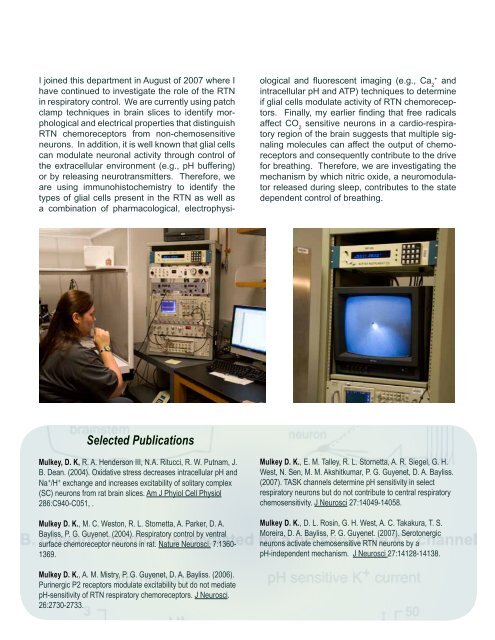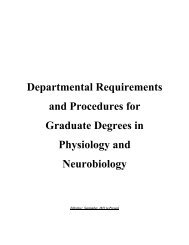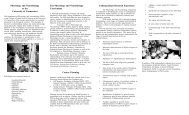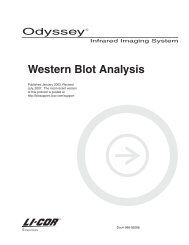Information Brochure (pdf) - Physiology and Neurobiology ...
Information Brochure (pdf) - Physiology and Neurobiology ...
Information Brochure (pdf) - Physiology and Neurobiology ...
Create successful ePaper yourself
Turn your PDF publications into a flip-book with our unique Google optimized e-Paper software.
I joined this department in August of 2007 where I<br />
have continued to investigate the role of the RTN<br />
in respiratory control. We are currently using patch<br />
clamp techniques in brain slices to identify morphological<br />
<strong>and</strong> electrical properties that distinguish<br />
RTN chemoreceptors from non-chemosensitive<br />
neurons. In addition, it is well known that glial cells<br />
can modulate neuronal activity through control of<br />
the extracellular environment (e.g., pH buffering)<br />
or by releasing neurotransmitters. Therefore, we<br />
are using immunohistochemistry to identify the<br />
types of glial cells present in the RTN as well as<br />
a combination of pharmacological, electrophysi-<br />
ological <strong>and</strong> fluorescent imaging (e.g., Ca 2<br />
+<br />
<strong>and</strong><br />
intracellular pH <strong>and</strong> ATP) techniques to determine<br />
if glial cells modulate activity of RTN chemoreceptors.<br />
Finally, my earlier finding that free radicals<br />
affect CO 2<br />
sensitive neurons in a cardio-respiratory<br />
region of the brain suggests that multiple signaling<br />
molecules can affect the output of chemoreceptors<br />
<strong>and</strong> consequently contribute to the drive<br />
for breathing. Therefore, we are investigating the<br />
mechanism by which nitric oxide, a neuromodulator<br />
released during sleep, contributes to the state<br />
dependent control of breathing.<br />
Selected Publications<br />
Mulkey, D. K, R. A. Henderson III, N.A. Ritucci, R. W. Putnam, J.<br />
B. Dean. (2004). Oxidative stress decreases intracellular pH <strong>and</strong><br />
Na + /H + exchange <strong>and</strong> increases excitability of solitary complex<br />
(SC) neurons from rat brain slices. Am J Phyiol Cell Physiol<br />
286:C940-C051, .<br />
Mulkey D. K., M. C. Weston, R. L. Stornetta, A. Parker, D. A.<br />
Bayliss, P. G. Guyenet. (2004). Respiratory control by ventral<br />
surface chemoreceptor neurons in rat. Nature Neurosci. 7:1360-<br />
1369.<br />
Mulkey D. K., E. M. Talley, R. L. Stornetta, A. R. Siegel, G. H.<br />
West, N. Sen, M. M. Akshitkumar, P. G. Guyenet, D. A. Bayliss.<br />
(2007). TASK channels determine pH sensitivity in select<br />
respiratory neurons but do not contribute to central respiratory<br />
chemosensitivity. J Neurosci 27:14049-14058.<br />
Mulkey D. K., D. L. Rosin, G. H. West, A. C. Takakura, T. S.<br />
Moreira, D. A. Bayliss, P. G. Guyenet. (2007). Serotonergic<br />
neurons activate chemosensitive RTN neurons by a<br />
pH-independent mechanism. J Neurosci 27:14128-14138.<br />
Mulkey D. K., A. M. Mistry, P. G. Guyenet, D. A. Bayliss. (2006).<br />
Purinergic P2 receptors modulate excitability but do not mediate<br />
pH-sensitivity of RTN respiratory chemoreceptors. J Neurosci.<br />
26:2730-2733.





